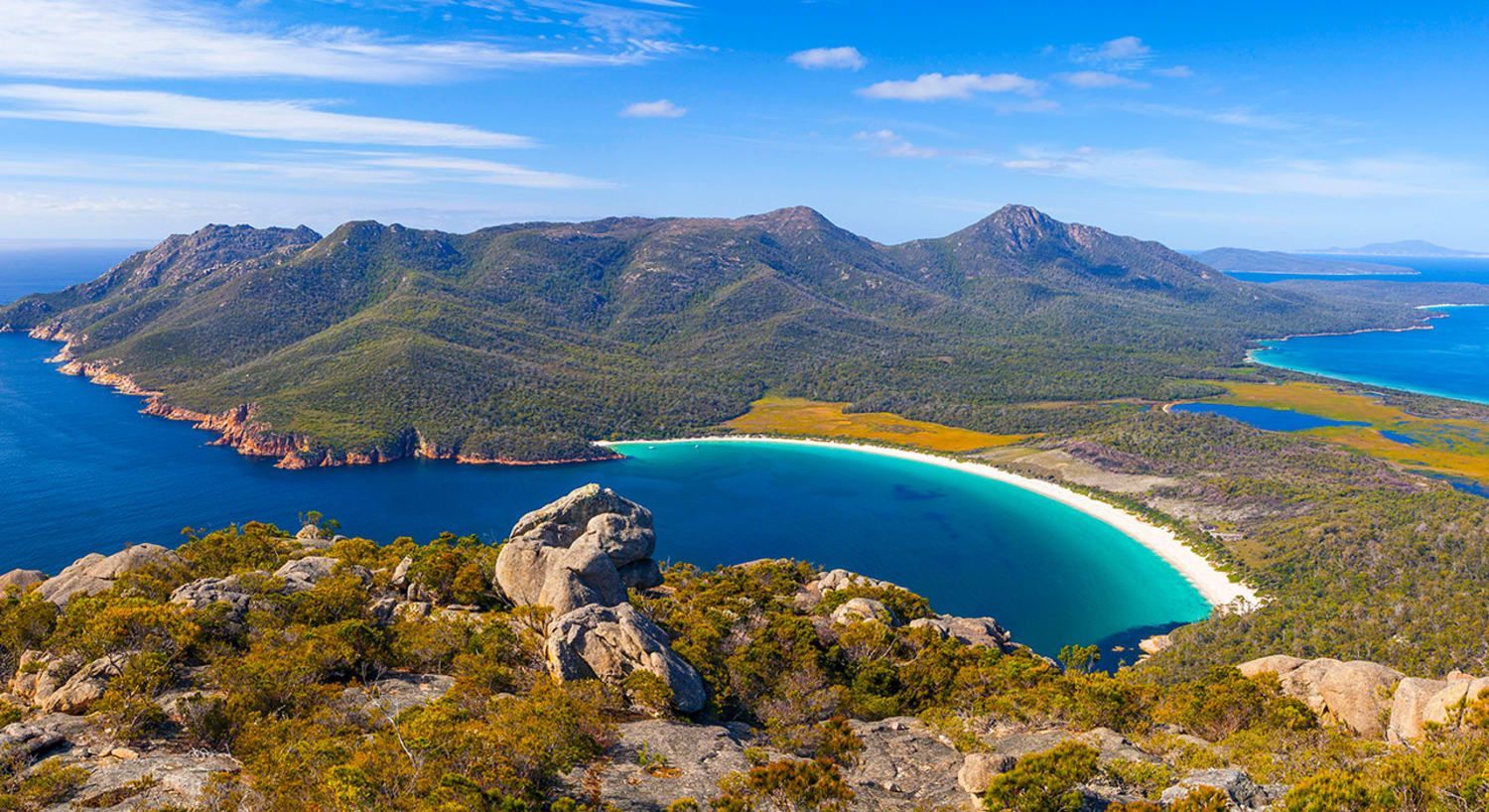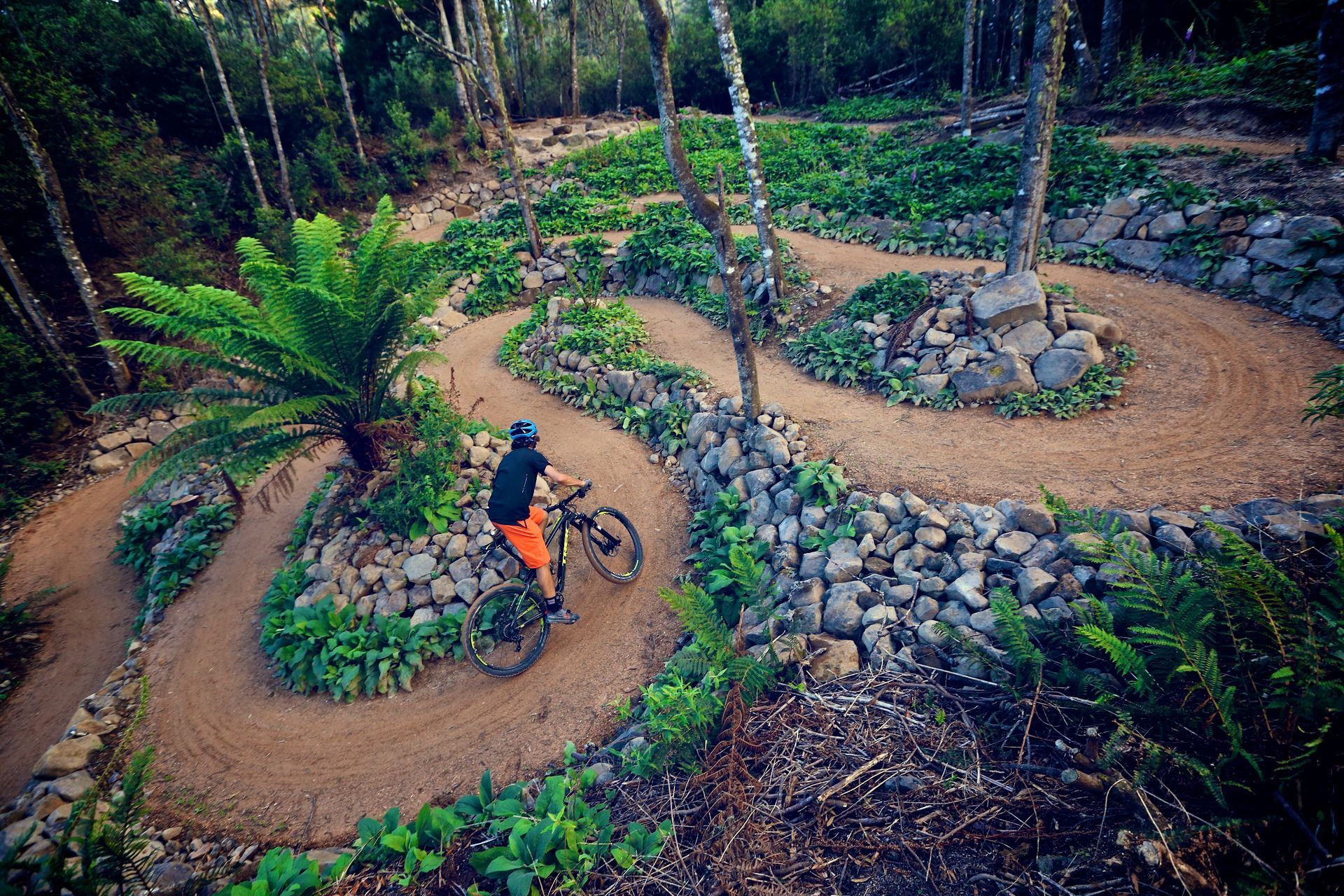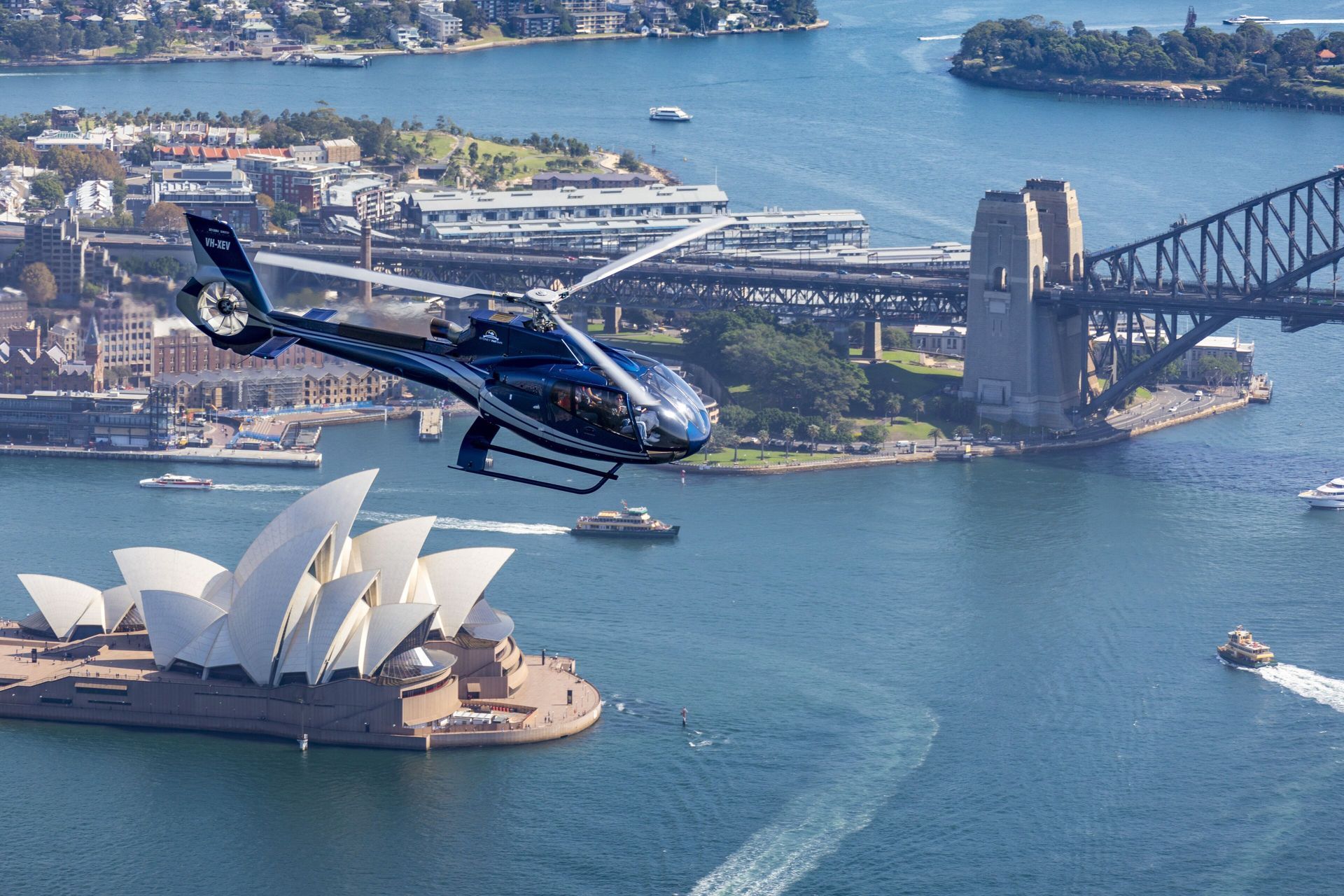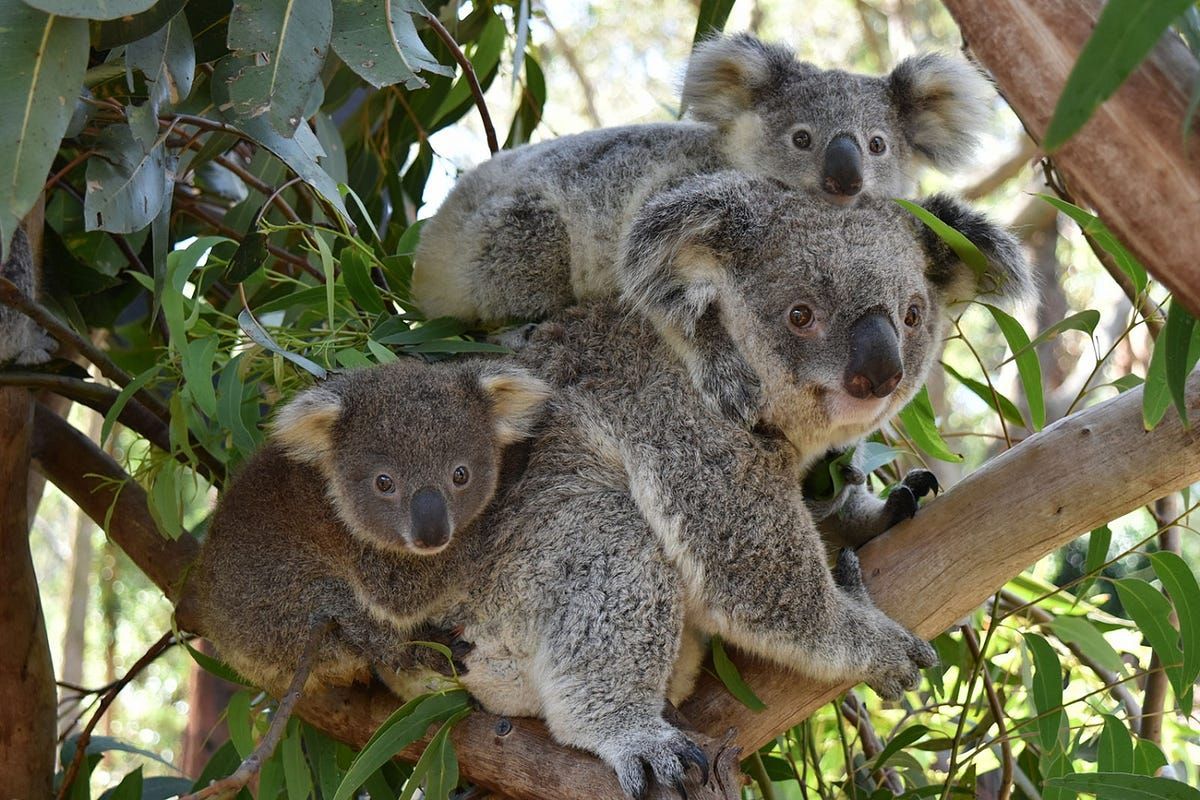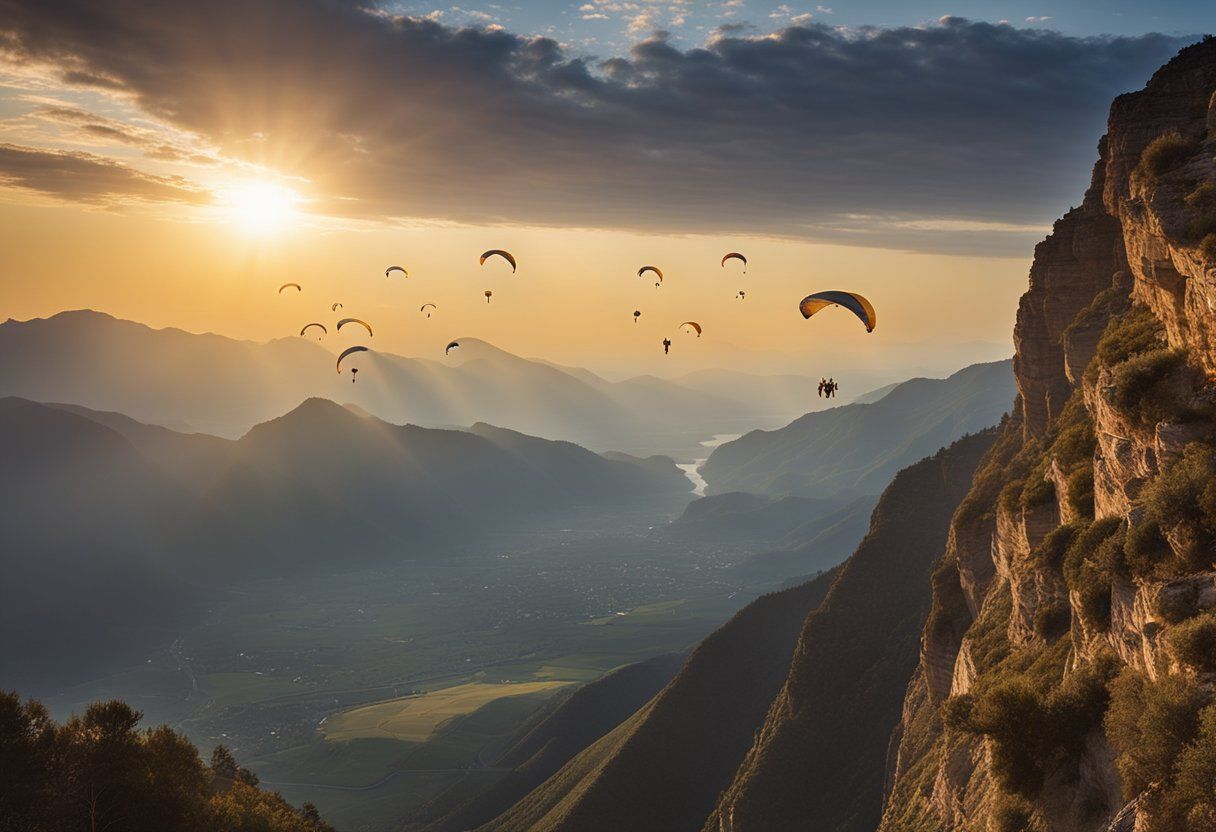To share
Uncover Tasmania's hidden gems with our top 10 adventure activities. From coastal kayaking to mountain biking through lush forests, experience the island's diverse landscapes and create lasting memories.
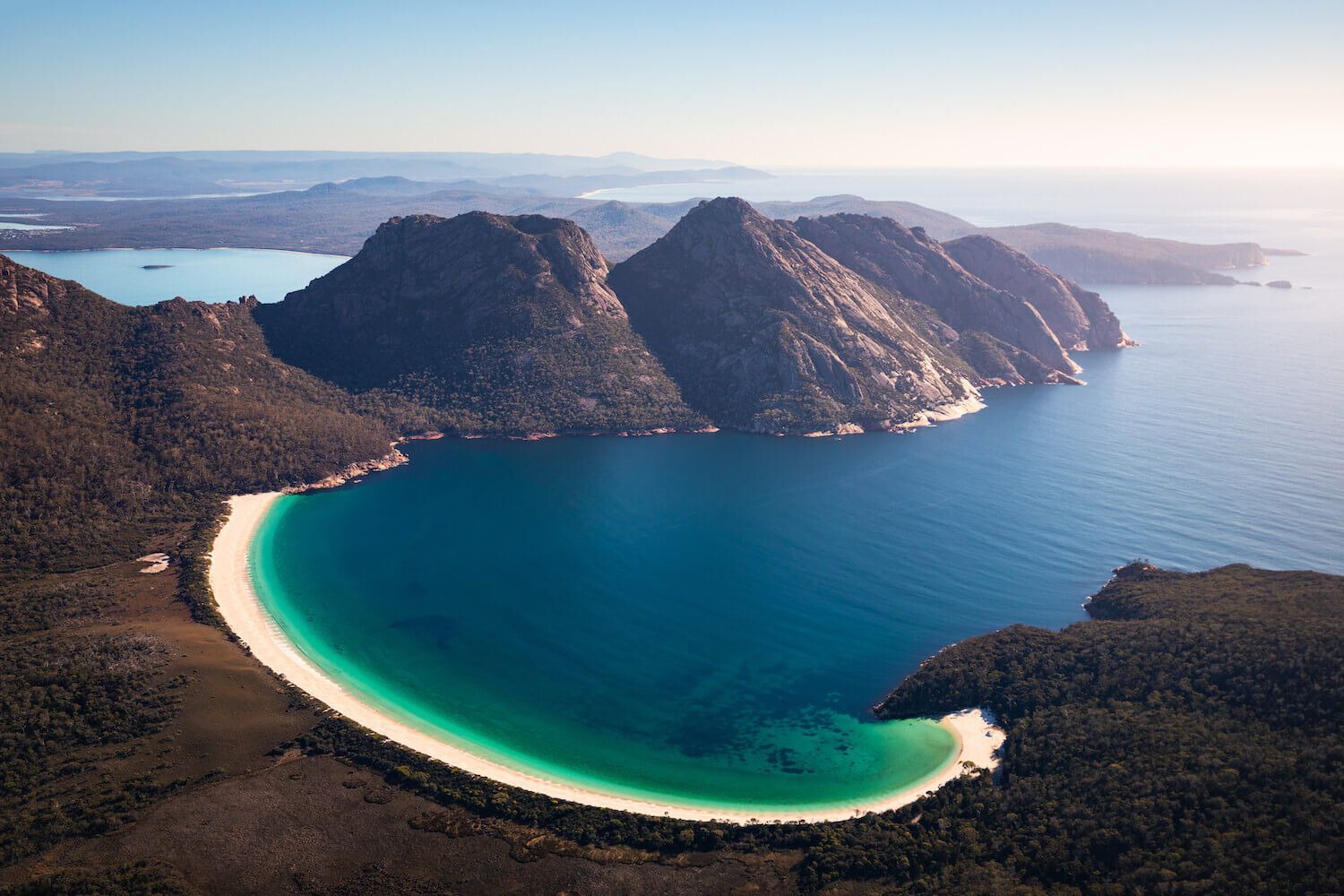
1. Hiking the Overland Track
The Overland Track is one of Tasmania's most iconic hiking trails, offering a challenging yet rewarding experience for outdoor enthusiasts. This 65-kilometer trek takes hikers through the heart of the Cradle Mountain-Lake St Clair National Park, showcasing some of Australia's most pristine wilderness.
Planning your multi-day trek
Planning is crucial for a successful Overland Track experience. The trek typically takes 5-6 days to complete, and it's essential to book well in advance, especially during peak season (October to May). Hikers are required to walk the track from north to south during this time.
Key planning considerations include:
- Booking your trek through the Tasmania Parks and Wildlife Service
- Arranging transportation to the starting point at Ronny Creek and from Lake St Clair
- Deciding whether to camp or stay in the basic huts along the trail
"Proper planning is the foundation of a memorable Overland Track experience. Take the time to research and prepare thoroughly."
Essential gear and supplies
Packing the right gear is vital for comfort and safety on the Overland Track. Tasmania's weather can be unpredictable, so it's important to be prepared for all conditions.
Essential items include:
- Sturdy, waterproof hiking boots
- High-quality, waterproof tent
- Warm sleeping bag (rated for subzero temperatures)
- Cooking equipment and enough food for the duration of the trek
- First aid kit and personal locator beacon
It's advisable to pack lightweight, quick-drying clothing and plenty of layers to adapt to changing weather conditions.
Highlights and scenic points along the trail
The Overland Track offers numerous breathtaking views and natural wonders. Some of the most notable highlights include:
- Cradle Mountain: The starting point of the trek, offering stunning views of the surrounding landscape
- Waterfall Valley: Home to several picturesque waterfalls
- Lake Windermere: A serene alpine lake perfect for a refreshing swim
- Mount Ossa: Tasmania's highest peak, offering an optional challenging side trip for experienced hikers
- Pine Valley: An optional detour known for its ancient rainforest and towering cliffs
- Lake St Clair: Australia's deepest lake and the endpoint of the trek
Each day of the hike presents new and awe-inspiring scenery, from button grass plains to ancient rainforests and rugged mountain peaks.
2. Kayaking in Freycinet National Park
Freycinet National Park, located on Tasmania's east coast, is renowned for its stunning coastline, pink granite mountains, and secluded bays. Kayaking is an excellent way to explore this beautiful area and get up close to its diverse wildlife.
Guided tours vs. self-guided adventures
When it comes to kayaking in Freycinet, visitors have the option of joining a guided tour or embarking on a self-guided adventure.
Guided tours offer several advantages:
- Expert local knowledge and interpretation of the area's history and ecology
- All necessary equipment is provided
- Safety briefings and support throughout the journey
- Suitable for beginners or those unfamiliar with the area
Self-guided adventures allow for more flexibility and independence but require more preparation:
- Kayak and safety equipment rental is available in nearby towns
- Detailed maps and tide information are essential
- Suitable for experienced kayakers comfortable with navigation and safety procedures
Best spots for wildlife viewing
Freycinet National Park is home to a diverse array of marine and terrestrial wildlife. Some of the best spots for wildlife viewing from a kayak include:
- Hazards Beach: Often frequented by wallabies and wombats
- Great Oyster Bay: Home to dolphins and seals
- Honeymoon Bay: A great spot to observe sea birds and occasionally sea eagles
- Wineglass Bay: Known for its crystal-clear waters and potential sightings of whales during migration season
Remember to maintain a respectful distance from wildlife and avoid disturbing their natural behaviors.
Safety tips for sea kayaking
Safety should be a top priority when sea kayaking in Freycinet National Park. Here are some important safety tips to keep in mind:
- Always check weather and sea conditions before setting out
- Wear a properly fitted life jacket at all times
- Carry a means of communication (marine radio or mobile phone in a waterproof case)
- Inform someone of your planned route and expected return time
- Stay close to the shoreline and avoid crossing large open stretches of water
- Be aware of potential hazards such as submerged rocks and strong currents
"Safety is paramount when kayaking in Freycinet. Always err on the side of caution and be prepared for changing conditions."
By following these guidelines and respecting the natural environment, kayaking in Freycinet National Park can be a safe and unforgettable adventure.
3. Mountain Biking in Blue Derby
Blue Derby, located in northeast Tasmania, has quickly become a premier destination for mountain biking enthusiasts. With its diverse trail network and stunning scenery, it offers an unforgettable experience for riders of all skill levels.
Trail difficulty levels and options
Blue Derby boasts an extensive network of purpose-built mountain biking trails, catering to a wide range of abilities:
- Green trails: Suitable for beginners and families, these trails offer gentle gradients and smooth surfaces.
- Blue trails: Intermediate riders will enjoy these trails with moderate technical features and flowing descents.
- Black trails: Advanced riders can test their skills on these challenging trails with steep descents, technical features, and jumps.
"The variety of trails at Blue Derby ensures that every rider, from novice to expert, can find their perfect challenge."
Bike rental and equipment
For visitors who prefer not to bring their own bikes, Blue Derby offers several bike rental options:
- Local bike shops provide high-quality mountain bikes suited for the trails.
- Rental packages often include helmets, gloves, and basic repair kits.
- E-bikes are available for those who want a little extra assistance on the climbs.
It's advisable to book rentals in advance, especially during peak seasons, to ensure availability.
Local events and competitions
Blue Derby hosts several events throughout the year, attracting riders from across Australia and beyond:
- The Enduro World Series has held stages in Blue Derby, showcasing the trails on a global stage.
- The Dragon Trail MTB Stage Race is a multi-day event that challenges riders with a mix of Blue Derby trails and backcountry routes.
Local clubs organize regular social rides and smaller competitions, providing opportunities for visitors to connect with the local riding community.
4. Canyoning in Cradle Mountain
Cradle Mountain, known for its iconic views and hiking trails, also offers thrilling canyoning experiences. This activity combines elements of climbing, swimming, and abseiling, allowing adventurers to explore the park's hidden waterways and geological wonders.
Choosing the right canyoning experience
Cradle Mountain offers canyoning experiences suitable for various skill levels:
- Beginners can opt for half-day introductory tours that focus on easier canyons with shorter abseils and gentler water features.
- Intermediate and advanced canyoners can challenge themselves with full-day expeditions that involve higher abseils, longer swims, and more technical routes.
- Some operators offer multi-day canyoning trips, allowing participants to explore multiple canyons in the area.
It's crucial to choose a reputable operator with experienced guides who prioritize safety and environmental conservation.
Physical requirements and preparation
Canyoning in Cradle Mountain requires a moderate level of fitness and comfort in water.
Participants should be prepared for:
- Walking and scrambling over uneven terrain
- Swimming in cold water (wetsuits are provided)
- Abseiling from heights of up to 30 meters
To prepare for a canyoning experience, it's recommended to:
- Engage in regular cardiovascular exercise
- Practice swimming and treading water
- Familiarize yourself with basic abseiling techniques, if possible
Unique geological features of the canyons
The canyons of Cradle Mountain showcase Tasmania's geological history:
- Ancient rock formations: The canyons cut through layers of Precambrian and Cambrian rocks, revealing millions of years of geological processes.
- Waterfalls and plunge pools: Erosion has created stunning waterfalls and deep, crystal-clear pools throughout the canyons.
- Diverse ecosystems: The canyons support unique plant and animal life adapted to the cool, moist environment.
"Canyoning in Cradle Mountain offers a rare opportunity to explore hidden corners of this World Heritage-listed wilderness, revealing natural wonders that few visitors ever see."
5. Diving and Snorkeling in the Tasman Peninsula
Best dive sites and marine life
The Tasman Peninsula offers some of the most diverse and exciting diving experiences in Australia.
Key dive sites include:
- Waterfall Bay: Known for its kelp forests and abundance of weedy seadragons
- Cathedral Cave: A vast underwater cavern system with unique rock formations
- The Lanterns: Features vibrant sponge gardens and schools of reef fish
Marine life enthusiasts can expect to encounter:
- Australian fur seals
- Blue-ringed octopuses
- Various species of sharks, including the elusive Port Jackson shark
- Colorful nudibranchs and sea stars
Water temperature and seasonal considerations
Tasmania's water temperatures vary significantly throughout the year:
- Summer (December-February): 16-18°C (60-64°F)
- Winter (June-August): 10-12°C (50-54°F)
Tip: A 7mm wetsuit is recommended for year-round diving comfort.
Visibility is generally best during winter months, often exceeding 20 meters. However, summer offers warmer conditions and increased marine activity.
Dive certifications and courses available
Several reputable dive operators in the Tasman Peninsula offer a range of certifications:
- PADI Open Water Diver
- SSI Advanced Adventure Diver
- TDI Technical Diving courses
Experienced divers can also pursue specialty courses focused on local conditions, such as:
- Kelp forest ecology
- Underwater photography
- Cave diving
6. Rock Climbing at the Freycinet Peninsula
Popular climbing routes and difficulty levels
Freycinet Peninsula is a rock climber's paradise, offering routes for all skill levels:
- The Hazards: Granite cliffs with routes ranging from beginner to expert
- Mt. Amos: Popular for bouldering and short climbs
- Whitewater Wall: Challenging sea cliff climbs
Difficulty levels range from Australian grade 10 (beginner) to grade 30 (expert).
Some notable routes include:
- Sunstrip (grade 18): A classic multi-pitch climb on The Hazards
- Sticky Fingers (grade 22): A challenging single-pitch route at Mt. Amos
- The Candlestick (grade 25): An exposed sea stack climb for experienced climbers
Equipment rental and guided climbs
Several local outfitters offer equipment rental and guided climbing experiences:
- Freycinet Adventures: Provides full gear rental and guided climbs for all levels
- Climb Tasmania: Offers customized climbing tours and instruction
Guided climbs typically include:
- Safety briefing and technique instruction
- All necessary equipment (harnesses, ropes, helmets)
- Transportation to and from climbing sites
Best seasons for climbing in Tasmania
While climbing is possible year-round, certain seasons offer optimal conditions:
- Spring (September-November): Mild temperatures and low rainfall make this an ideal climbing season
- Autumn (March-May): Similar to spring, with stable weather and comfortable temperatures
Summer can be warm but is suitable for early morning or late afternoon climbs. Winter climbing is possible but requires additional preparation for potential cold and wet conditions.
Note: Always check local weather forecasts and seek advice from experienced guides before embarking on any climbing adventure.
7. White Water Rafting on the Franklin River
Multi-day rafting expeditions
The Franklin River offers some of the most exhilarating multi-day rafting expeditions in Australia. These trips typically range from 5 to 10 days, allowing participants to fully immerse themselves in the pristine wilderness of Tasmania's southwest. Experienced guides lead small groups through the river's challenging rapids and tranquil stretches, providing a unique perspective on this UNESCO World Heritage-listed area.
Expeditions often include:
- Camping on sandy beaches and rocky outcrops
- Exploring side canyons and waterfalls
- Learning about the area's rich Aboriginal history and conservation efforts
"The Franklin River expedition is not just a rafting trip; it's a journey through time and nature that leaves an indelible mark on every participant."
Rapids classification and river sections
The Franklin River is known for its varied and challenging rapids, ranging from Class II to Class VI.
The river is divided into several sections, each offering a unique rafting experience:
- Upper Franklin: Features technical rapids and stunning gorges
- Great Ravine: Considered the most challenging section with Class IV-V rapids
- Lower Franklin: Offers a mix of calm stretches and exciting rapids
Rafters should be prepared for:
- Portaging around unrunnable rapids
- Navigating through tight rock formations
- Adapting to changing water levels that can affect rapid difficulty
Environmental conservation efforts
The Franklin River holds a significant place in Australia's environmental history. The successful campaign to prevent damming of the river in the 1980s marked a turning point in conservation efforts nationwide. Today, various organizations and tour operators work together to preserve the river's pristine condition:
- Implementation of strict "Leave No Trace" principles
- Regular clean-up initiatives to remove any debris
- Ongoing monitoring of water quality and ecosystem health
Visitors are encouraged to participate in conservation efforts by:
- Minimizing their environmental impact during expeditions
- Supporting local conservation groups
- Sharing their experiences to raise awareness about the river's importance
8. Paragliding over the Tasman Peninsula
Tandem flights for beginners
Paragliding over the Tasman Peninsula offers a unique perspective on Tasmania's stunning coastline.
For those new to the sport, tandem flights provide a safe and thrilling introduction:
- Flights typically last 15-20 minutes
- Experienced pilots handle take-off, flight control, and landing
- Pre-flight safety briefings ensure passengers understand procedures
Many operators offer:
- GoPro footage of the flight
- Option to take control of the glider under pilot supervision
- Flexible scheduling to accommodate weather conditions
Weather conditions and best flying times
Successful paragliding is highly dependent on favorable weather conditions. The Tasman Peninsula experiences a temperate maritime climate, with conditions varying throughout the year:
- Spring (September-November): Often provides stable conditions with moderate winds
- Summer (December-February): Offers longer daylight hours but can have stronger thermal activity
- Autumn (March-May): Generally stable with mild temperatures
- Winter (June-August): Can offer clear days but with colder temperatures
Ideal conditions for paragliding include:
- Wind speeds between 10-25 km/h
- Clear visibility
- Stable air with minimal turbulence
It's advisable to book flights with flexible dates to ensure the best possible conditions for your paragliding experience.
Scenic views and photo opportunities
Paragliding over the Tasman Peninsula provides unparalleled views of Tasmania's dramatic coastline and diverse landscapes:
- Soaring over the iconic Three Capes Track
- Bird's-eye views of Port Arthur Historic Site
- Panoramic vistas of the Southern Ocean and Tasman Sea
Notable photo opportunities include:
- The dolerite sea cliffs of Cape Raoul and Cape Pillar
- The pristine beaches of Fortescue Bay
- The rugged terrain of Tasman National Park
"Paragliding offers a unique perspective on Tasmania's natural beauty, allowing you to capture memories that will last a lifetime."
Many operators allow passengers to bring their own cameras or smartphones for photography during the flight, subject to safety guidelines. Some also offer professional photography services as an add-on to the experience.
9. Caving in Mole Creek Karst National Park
Guided cave tours and spelunking adventures
Mole Creek Karst National Park offers a range of caving experiences suitable for various skill levels. Visitors can choose from guided tours of well-lit caves to more challenging spelunking adventures. Popular caves include Marakoopa Cave and King Solomons Cave, both known for their stunning formations and glow worm displays.
Unique cave formations and underground rivers
The caves in Mole Creek are home to an array of geological wonders. Stalactites, stalagmites, and flowstones create otherworldly landscapes underground. Some caves feature underground rivers and streams, adding to the sensory experience of exploring these subterranean environments.
Safety precautions and equipment
When participating in caving activities, safety is paramount. Guided tours provide necessary equipment such as helmets and headlamps. For more advanced caving, additional gear like ropes and harnesses may be required. It's essential to follow guide instructions and stay on designated paths to protect both visitors and the delicate cave ecosystems.
10. Surfing on the East Coast
Top surf spots for different skill levels
Tasmania's East Coast boasts numerous surf spots catering to various skill levels. Beginners might enjoy the gentle waves at Clifton Beach or Seven Mile Beach near Hobart. More experienced surfers can challenge themselves at Eaglehawk Neck or Shipstern Bluff, known for its massive swells.
Surf schools and lessons
Several surf schools operate along the East Coast, offering lessons for beginners and intermediate surfers. These schools provide equipment rentals and expert instruction on surfing techniques, water safety, and reading surf conditions.
Understanding local surf etiquette
Respecting local surf etiquette is crucial for a positive experience. This includes understanding right of way rules, not dropping in on other surfers, and being aware of your skill level in relation to the conditions. Many local surf shops and schools can provide guidance on etiquette specific to Tasmanian beaches.
Summary
Tasmania offers a diverse range of adventure activities, from exploring underground caves to riding waves on the East Coast. These experiences provide unique ways to connect with the island's natural beauty and challenge oneself in the process.
Frequently Asked Questions
What is the best time of year to visit Tasmania for adventure activities?
The best time for adventure activities in Tasmania depends on the specific activity and personal preferences. Summer (December to February) offers warmer temperatures ideal for water-based activities, while winter (June to August) is perfect for snow sports in the highlands.
Are there age restrictions for these activities?
Age restrictions vary depending on the activity and provider. Many guided tours and activities have minimum age requirements, typically around 5-8 years old. More challenging adventures may have higher age limits or require parental consent for minors.
How fit do I need to be to participate in these adventures?
Fitness requirements vary widely. Some activities, like scenic walks or gentle kayaking, are suitable for most fitness levels. More strenuous activities like multi-day hikes or advanced caving may require a higher level of fitness. It's best to check with tour operators for specific requirements.
What kind of wildlife might I encounter during these activities?
Tasmania is home to diverse wildlife, including wallabies, wombats, and Tasmanian devils. While engaging in outdoor activities, you may also encounter various bird species, reptiles, and marine life. Always observe wildlife from a safe distance and follow guide instructions to minimize disturbance.
Are there any permits required for these adventures?
Some activities, particularly those in national parks, may require permits. For example, certain hiking trails and camping areas require bookings or passes. Most guided tours include necessary permits in their packages. It's advisable to check with local authorities or tour operators regarding specific permit requirements for your chosen activities.

